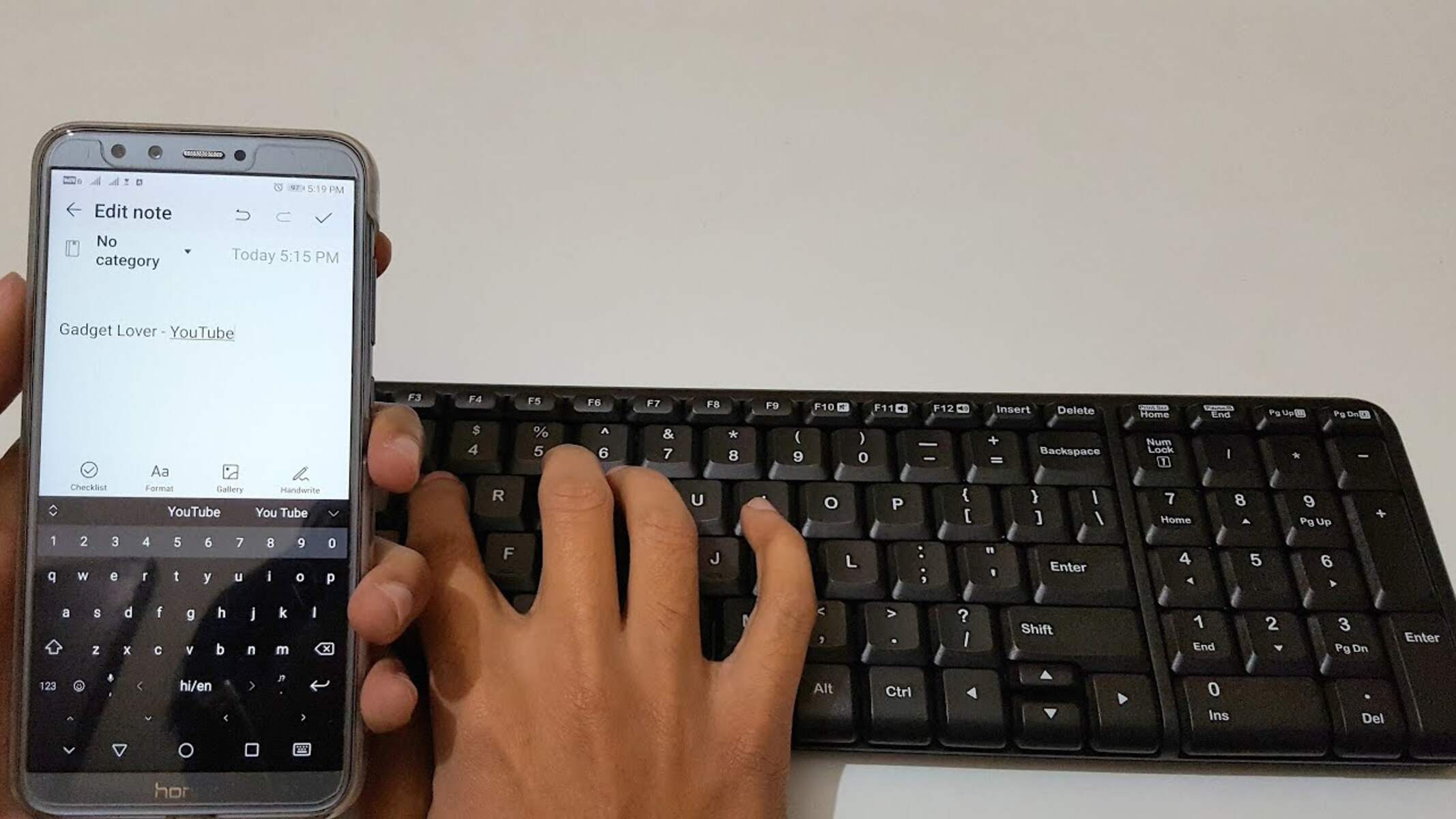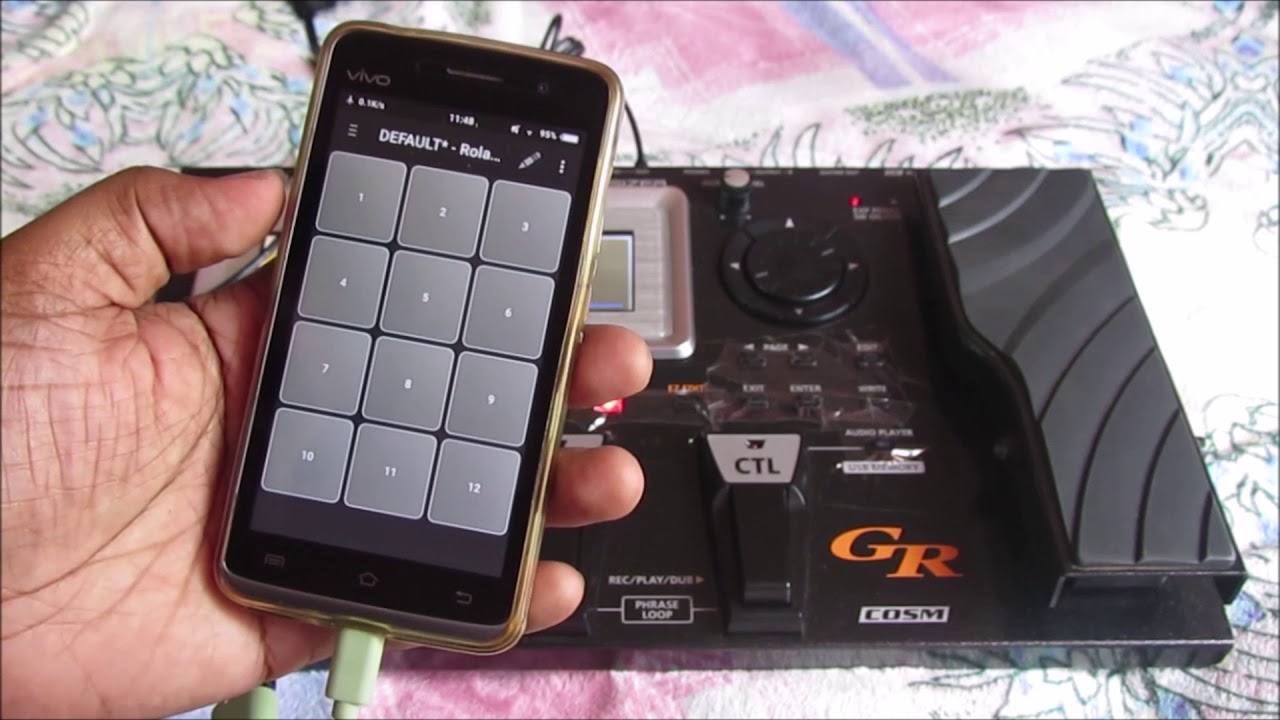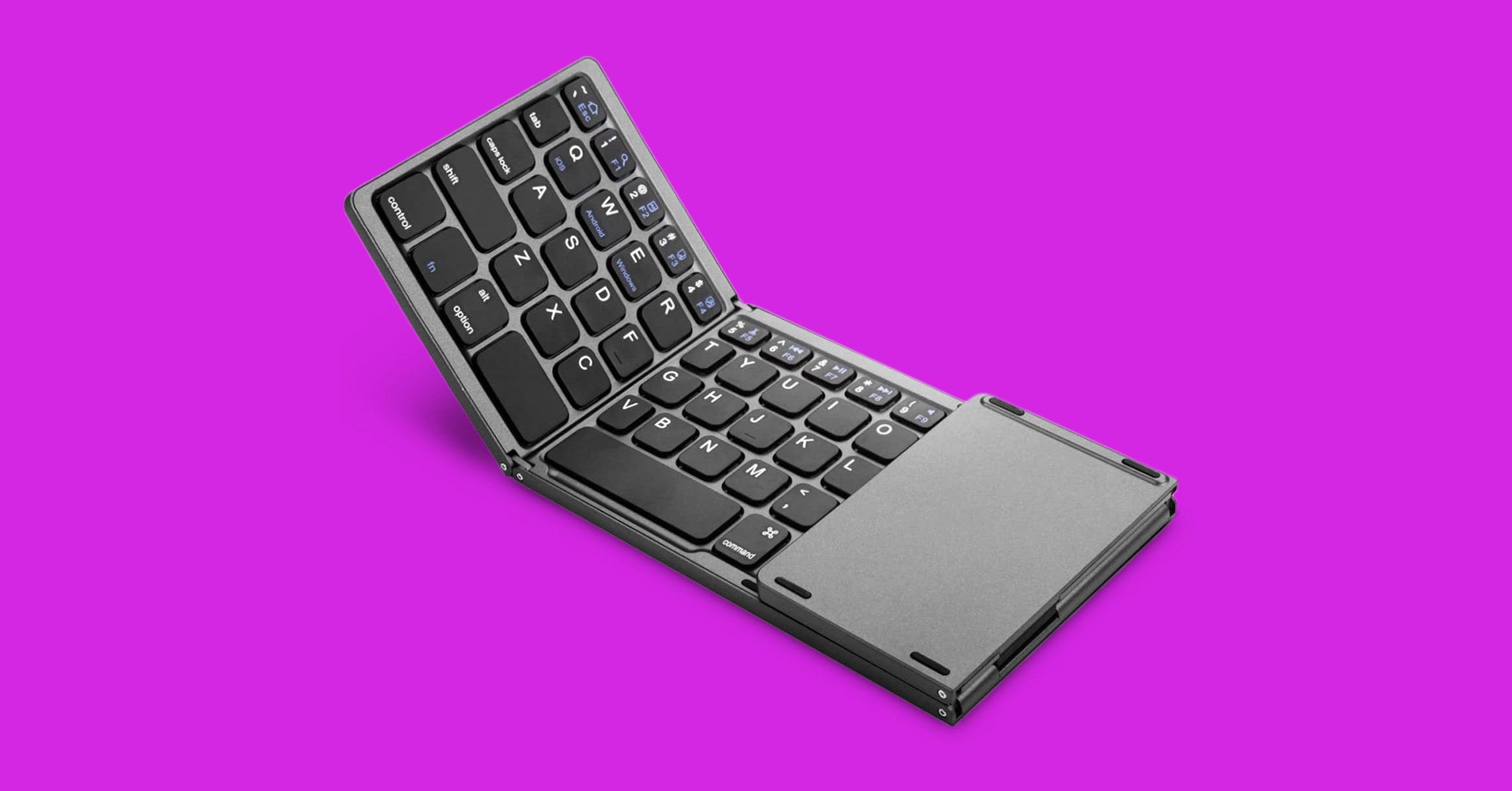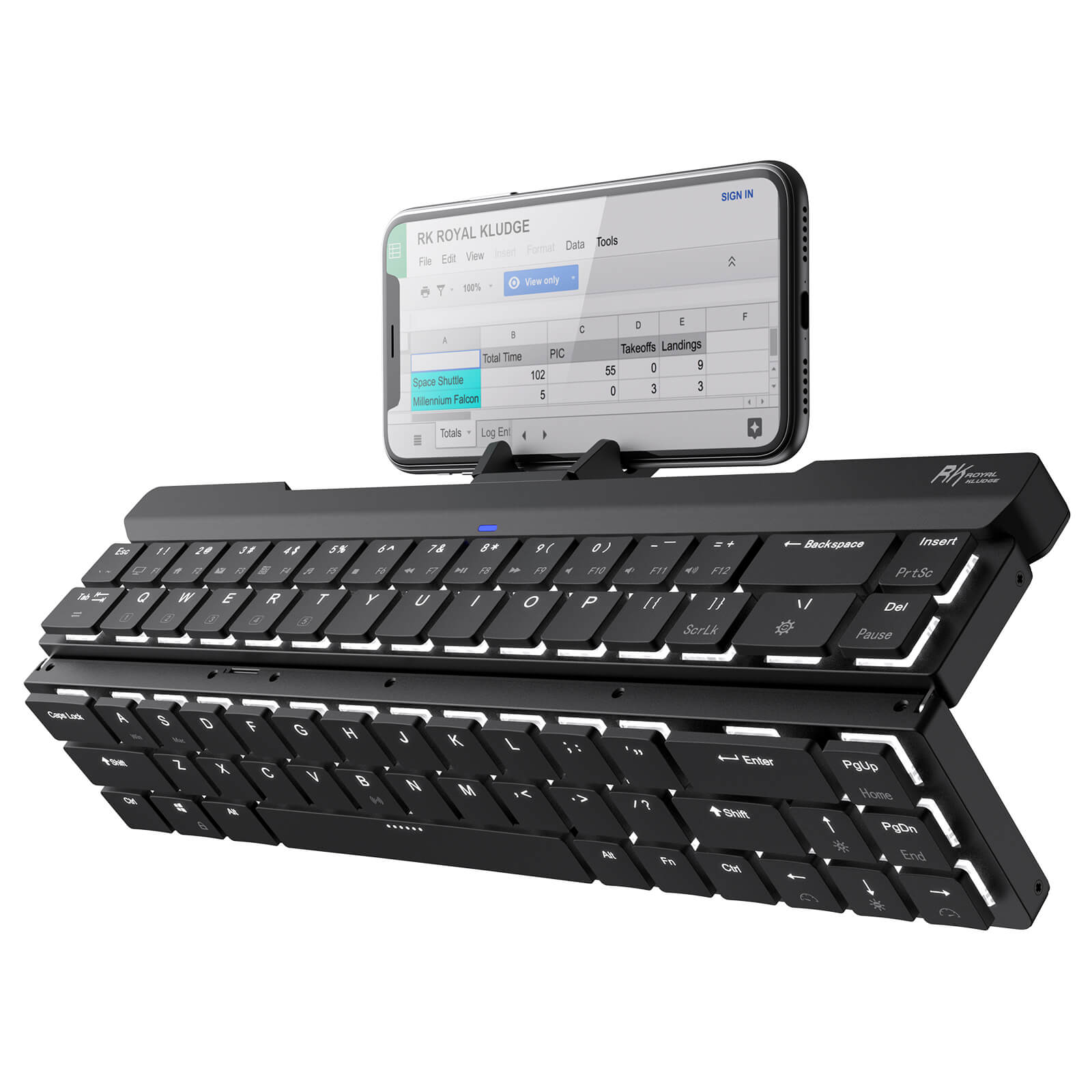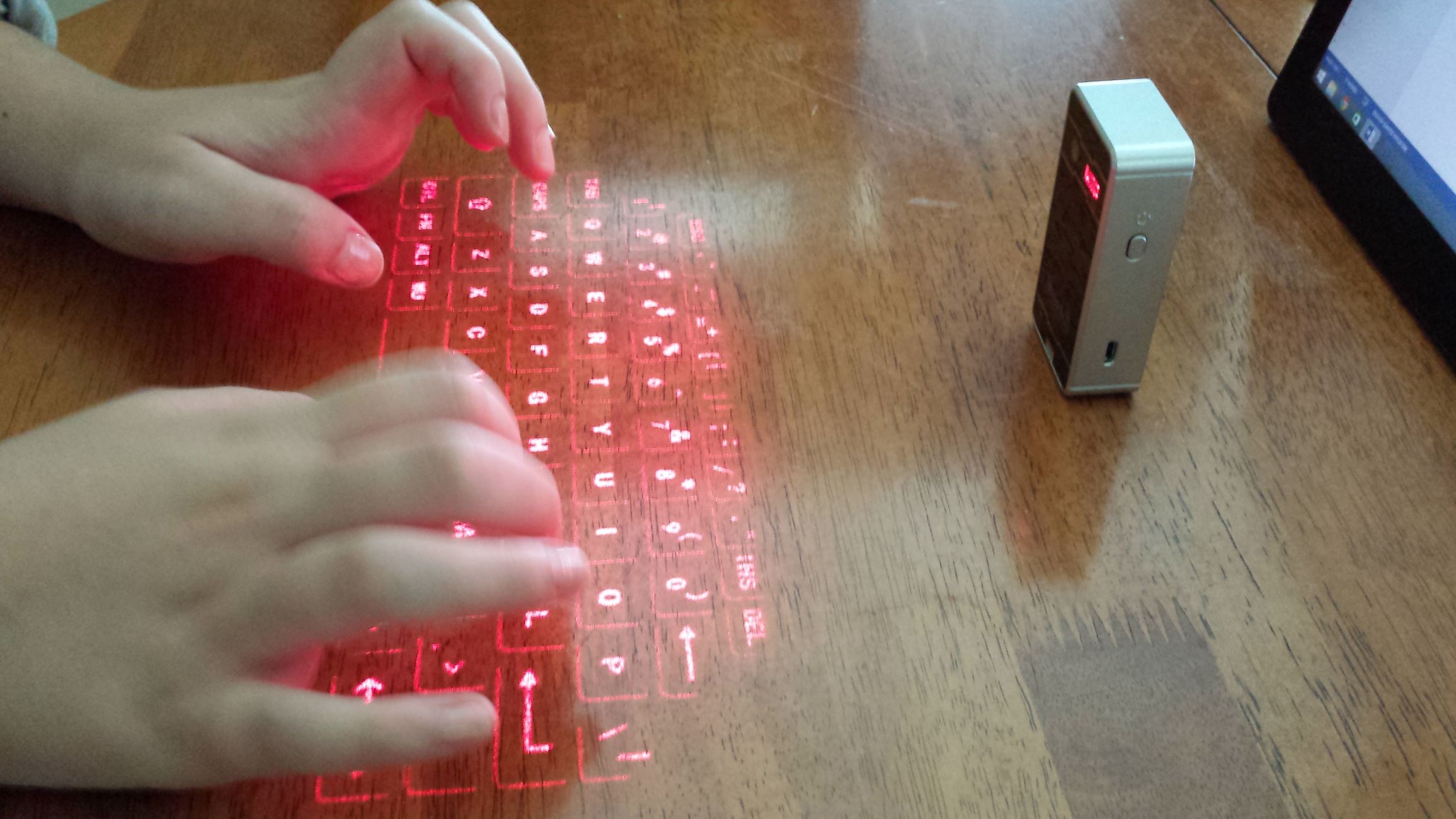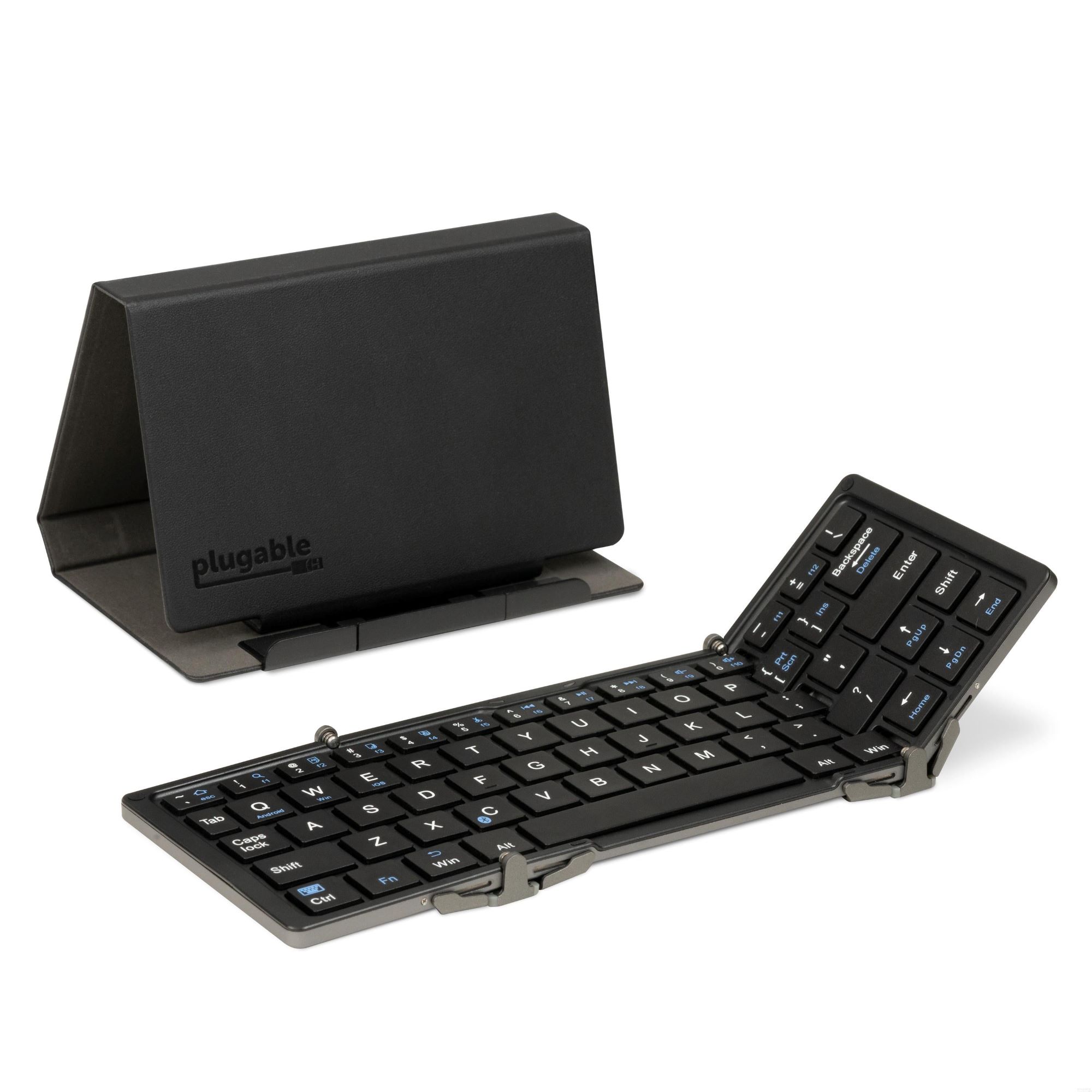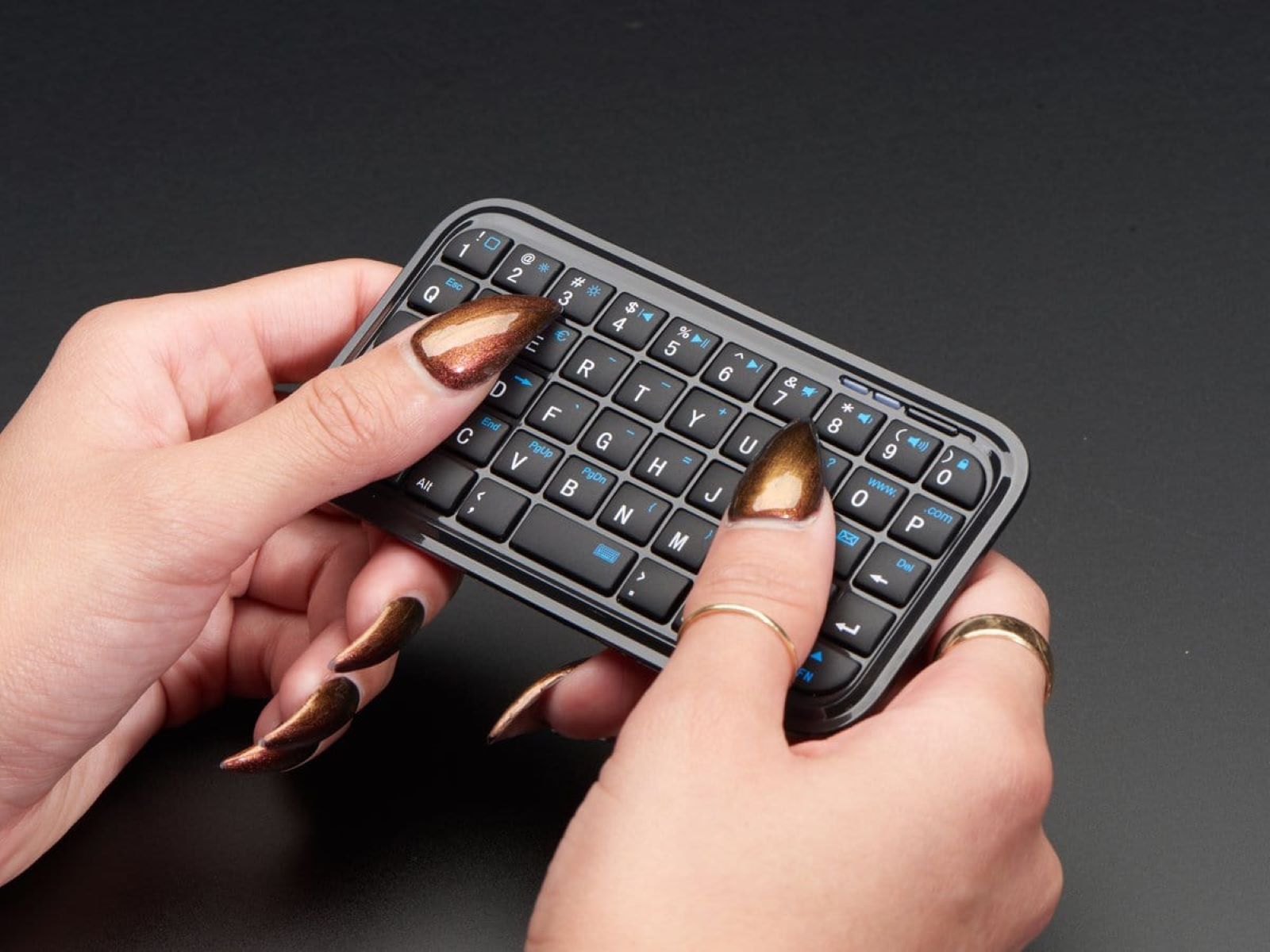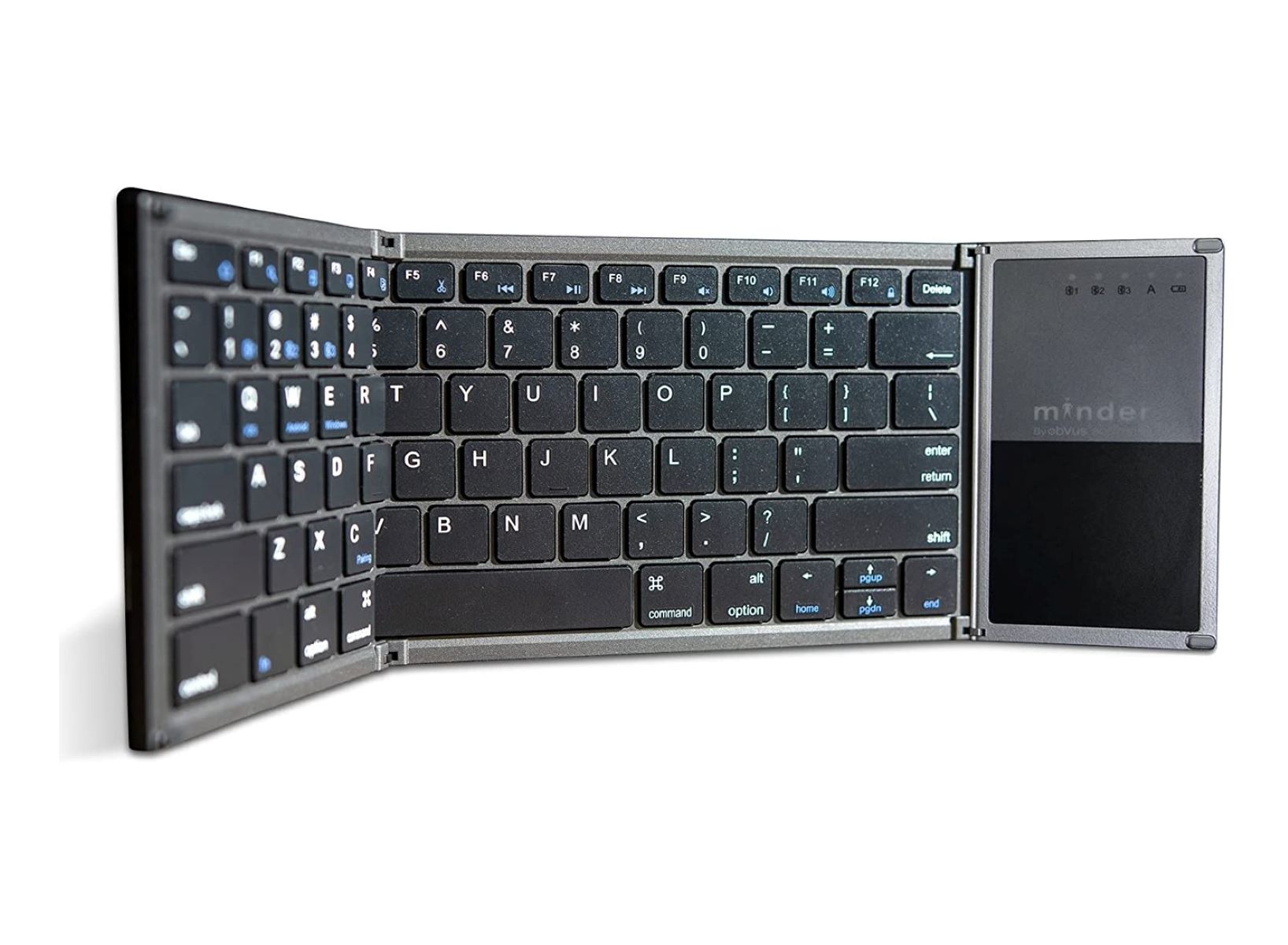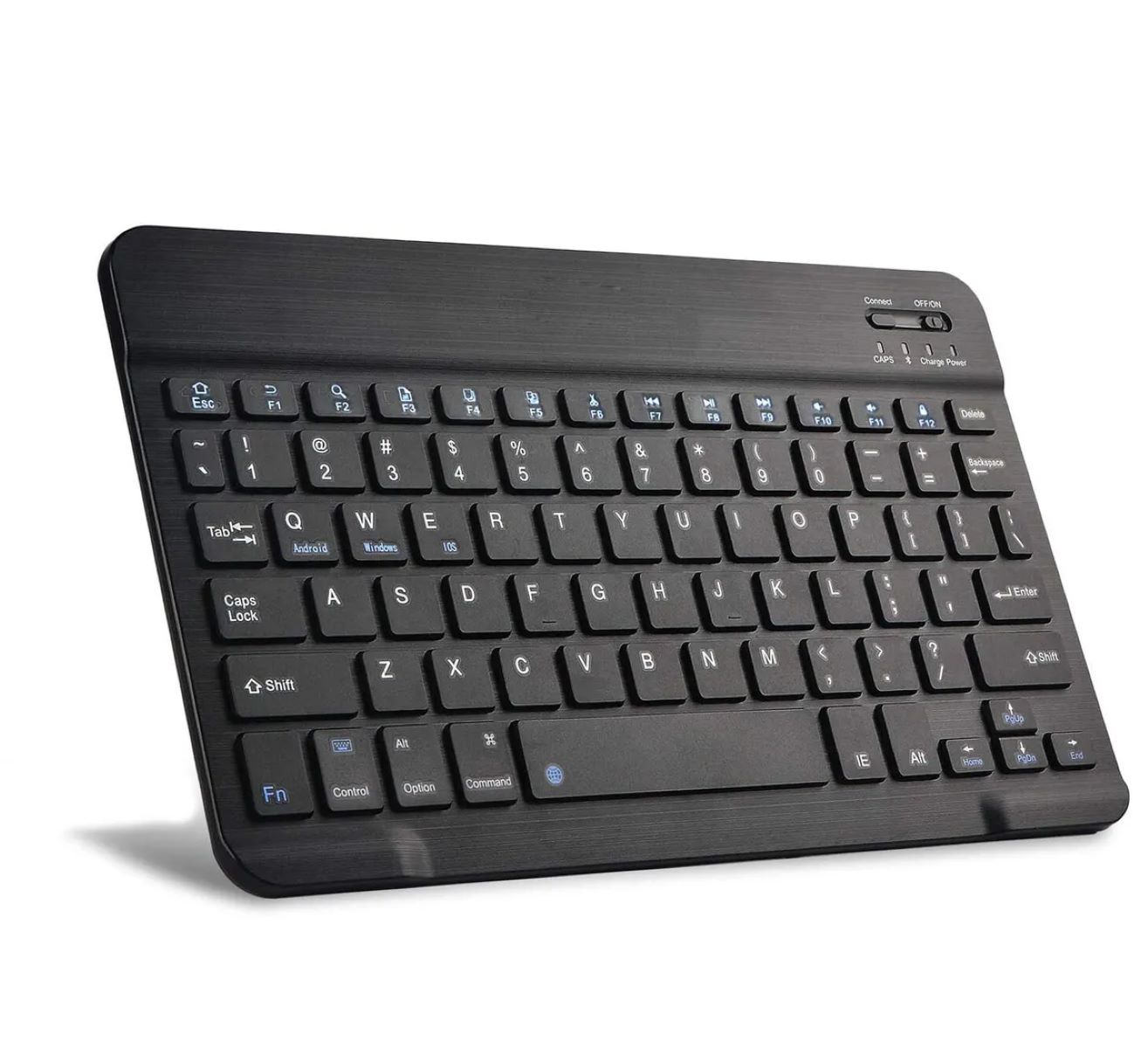Introduction
As smartphones continue to evolve and become more powerful, many people are using them as their primary device for various tasks, including productivity and entertainment. One way to enhance the functionality of your smartphone is by connecting it to a portable keyboard. This allows you to type more efficiently and comfortably, especially when composing emails, writing documents, or engaging in extensive messaging.
Connecting a portable keyboard to your smartphone is a relatively straightforward process. However, the exact steps may vary depending on the make and model of your smartphone and the type of keyboard you have. In this article, we will provide you with a comprehensive guide on how to connect a portable keyboard with different types of smartphones, including iPhones, Android phones, and Windows phones.
Before we delve into the specific steps for each type of smartphone, let’s take a moment to understand the portable keyboard and your smartphone. This knowledge will help you grasp the underlying concepts and troubleshoot any issues that may arise during the connection process.
A portable keyboard is a compact device designed for easy transportation and use on the go. It typically connects to electronic devices via wireless technology, such as Bluetooth, or a wired connection like a USB cable. These keyboards come in various sizes and designs, offering different features and functionalities.
Your smartphone, on the other hand, is a handheld device that combines the functions of a mobile phone, computer, and camera. It serves as a hub for communication, entertainment, productivity, and much more. Smartphones are available in different operating systems, such as iOS (found on iPhones), Android (used in many popular brands), and Windows (primarily on Microsoft Lumia phones).
With this basic understanding, let’s now explore the steps for connecting a portable keyboard to your smartphone. Whether you have an iPhone, Android phone, or a Windows phone, we have you covered. Read on to learn how to make the most of your smartphone and boost your productivity with a portable keyboard.
Understanding Your Portable Keyboard
Before connecting your portable keyboard to your smartphone, it’s essential to have a good understanding of its features and functionalities. This knowledge will help you navigate the connection process more effectively and make the most of your keyboard’s capabilities.
Portable keyboards come in a variety of sizes, ranging from compact to full-size. Compact keyboards are often foldable or rollable, making them easy to carry in your bag or even your pocket. Full-size keyboards, on the other hand, resemble traditional computer keyboards and offer a more comfortable typing experience if portability is not a concern.
In addition to size, portable keyboards may have different layouts. The most common layout is the QWERTY format, which resembles the arrangement of keys on a standard computer keyboard. However, some portable keyboards may have alternative layouts, such as AZERTY or Dvorak. It’s important to check the layout of your keyboard and ensure that it matches your typing preferences.
Another aspect to consider is the connectivity options of the portable keyboard. Most modern keyboards use wireless technologies like Bluetooth to connect to other devices. However, some keyboards may have the option for a wired connection via USB. Knowing the connectivity options of your keyboard will help you determine the appropriate method to connect it to your smartphone.
Some portable keyboards also come equipped with additional features that enhance convenience and productivity. These features may include backlighting, multimedia keys, adjustable stands, and even built-in touchpads. It’s worth exploring the capabilities of your keyboard to take advantage of these added functionalities.
Understanding the power source of your portable keyboard is also crucial. Some keyboards operate on batteries, while others can be charged using a USB cable. If your keyboard requires batteries, make sure to keep them charged or have spare batteries on hand to avoid any interruptions in usage.
We recommend consulting the user manual or documentation that came with your portable keyboard for specific instructions and details about its features. Becoming familiar with your keyboard will enable you to maximize its potential and make the connection with your smartphone a seamless experience.
Now that you understand the key aspects of your portable keyboard, it’s time to move on to understanding your smartphone. In the next section, we will discuss the different types of smartphones and their respective connection processes.
Understanding Your Smartphone
Before connecting your portable keyboard to your smartphone, it’s important to have a solid understanding of your smartphone’s operating system and its capabilities. This knowledge will help you navigate the connection process and ensure compatibility between your keyboard and smartphone.
There are three main types of smartphones to consider: iPhones, Android phones, and Windows phones. Each operating system has its own unique features, interface, and settings, which may impact how you connect your portable keyboard.
iPhones run on the iOS operating system, developed by Apple. iOS offers a user-friendly interface and a seamless integration with other Apple devices and services. Some popular iPhone models include the iPhone 12, iPhone SE, and iPhone 11. If you have an iPhone, you can connect your portable keyboard using either Bluetooth or a USB connection.
Android phones, on the other hand, use the Android operating system, which is developed by Google and used by various smartphone manufacturers, such as Samsung, Huawei, and Google Pixel. Android provides a highly customizable and versatile platform. The connection process for a portable keyboard may vary slightly depending on the specific Android device, but you can typically connect via Bluetooth or USB.
Windows phones, primarily found in Microsoft Lumia devices, operate on the Windows operating system. While Windows phones are not as common as iPhones or Android phones, they still offer a unique user experience. To connect your portable keyboard to a Windows phone, you can typically use either Bluetooth or USB connectivity.
It’s worth noting that the connectivity options available on your smartphone may depend on its model and hardware capabilities. Ensure that your smartphone supports the connection method you intend to use with your portable keyboard.
Furthermore, it’s advisable to update your smartphone’s operating system to the latest version. Updates often include bug fixes, performance improvements, and added features, which can enhance the compatibility and functionality of the keyboard connection.
Understanding the operating system of your smartphone is essential to troubleshoot any issues that may arise during the connection process. It also allows you to fully explore the capabilities of your smartphone and unlock its potential for productivity and entertainment.
Now that you have a better understanding of your smartphone, it’s time to dive into the specific steps for connecting a portable keyboard to each type of smartphone. In the following sections, we will guide you through the necessary steps for connecting your portable keyboard to an iPhone, Android phone, or Windows phone.
Connecting a Portable Keyboard to an iPhone
If you own an iPhone and want to connect a portable keyboard to it, there are a few simple steps to follow to establish a seamless connection.
1. Ensure that your portable keyboard is compatible with iOS devices. Most portable keyboards that support Bluetooth connectivity should work with iPhones. However, it’s always a good idea to check the manufacturer’s specifications or website to confirm compatibility.
2. Power on your portable keyboard and put it into pairing mode. This process may vary depending on the keyboard model, but typically involves pressing and holding the Bluetooth or Connect button until the keyboard’s LED indicator starts flashing.
3. On your iPhone, go to the Settings app and tap on “Bluetooth.” Make sure Bluetooth is turned on. Your iPhone will automatically begin scanning for nearby devices.
4. Locate your keyboard in the list of available devices and tap on it to initiate the pairing process. It may be labeled with the keyboard’s model or a generic name like “Bluetooth Keyboard.”
5. If prompted, enter a passcode or PIN on your iPhone. Some keyboards may require a passcode to establish a secure connection. Follow the instructions provided with your keyboard to enter the passcode, if necessary.
6. Once your iPhone successfully pairs with the portable keyboard, you should see a notification on the screen confirming the connection. Your keyboard is now ready to use with your iPhone.
7. Test the connection by opening a text field, such as the Notes app or any messaging app, and start typing on your portable keyboard. You should see the text appearing on your iPhone’s screen as you type.
If you prefer a wired connection, some portable keyboards offer the option to connect directly to your iPhone using a USB cable. Simply connect the keyboard to your iPhone using a Lightning to USB adapter or a USB-C to USB adapter, depending on your iPhone’s port type. Your iPhone should recognize the keyboard automatically, and you can start typing right away.
Remember to keep your portable keyboard within the Bluetooth range of your iPhone for a stable connection. If you experience any issues, consult the user manual for your keyboard or visit the manufacturer’s support website for troubleshooting tips.
Now that you know how to connect a portable keyboard to your iPhone, let’s move on to the next section where we’ll discuss connecting a portable keyboard to an Android phone.
Connecting a Portable Keyboard to an Android Phone
Connecting a portable keyboard to an Android phone is a straightforward process, allowing you to type more efficiently on your device. Follow these steps to establish a connection between your portable keyboard and your Android phone:
1. Ensure that your portable keyboard is compatible with Android devices. Most portable keyboards that support Bluetooth connectivity should work with Android phones. However, it’s always a good idea to check the manufacturer’s specifications or website to confirm compatibility.
2. Power on your portable keyboard and enable pairing mode. This process may vary depending on the keyboard model, but typically involves pressing and holding the Bluetooth or Connect button until the keyboard’s LED indicator starts flashing, indicating that it is ready to pair with a device.
3. On your Android phone, go to the Settings app and open the Bluetooth settings. Make sure Bluetooth is turned on. Your phone will start scanning for nearby devices.
4. Locate your keyboard in the list of available devices and tap on it to initiate the pairing process. The keyboard may be identified by the model name or a generic name like “Bluetooth Keyboard.”
5. If prompted, enter a passcode or PIN on your Android phone. Some keyboards require a passcode to establish a secure connection. Refer to the instructions provided with your keyboard if you need to enter a passcode.
6. Once your Android phone successfully pairs with the portable keyboard, a notification will appear confirming the connection. Your keyboard is now ready to use with your Android phone.
7. Test the connection by opening a text field, such as the Notes app or any messaging app, on your Android phone. Start typing on the portable keyboard, and you should see the text appearing on the screen as you type.
If you prefer a wired connection, some portable keyboards offer the option to connect directly to your Android phone using a USB cable. Ensure your Android phone has a USB Type-C or micro-USB port, and connect the keyboard using the appropriate cable. Your Android phone should recognize the keyboard automatically, and you can start typing right away.
Keep in mind that the connection range of Bluetooth keyboards is typically around 30 feet. For a stable connection, ensure that your keyboard remains within this range of your Android phone.
If you encounter any issues during the connection process, consult the user manual for your keyboard or visit the manufacturer’s support website for troubleshooting assistance.
Now that you have successfully connected a portable keyboard to your Android phone, let’s explore connecting a portable keyboard to a Windows phone in the next section.
Connecting a Portable Keyboard to a Windows Phone
If you own a Windows phone and want to connect a portable keyboard to it, you can do so with these simple steps:
1. Confirm the compatibility of your portable keyboard with Windows phones. Most portable keyboards that support Bluetooth or USB connectivity should work with Windows phones. Review the manufacturer’s specifications or website to ensure compatibility.
2. Turn on your portable keyboard and activate the pairing mode. The process may vary depending on the keyboard model, but generally, you need to press and hold the Bluetooth or Connect button until the indicator light flashes, indicating that the keyboard is ready to pair.
3. On your Windows phone, go to the Settings app and navigate to the Bluetooth section. Enable Bluetooth if it’s not already turned on. Your phone will start searching for nearby devices.
4. Locate your keyboard in the list of available devices and tap on it to initiate the pairing process. The keyboard may be identified by its model name or a generic name, such as “Bluetooth Keyboard.”
5. If prompted, enter a passcode or PIN on your Windows phone. Some keyboards require a passcode to establish a secure connection. Refer to the instructions provided with your keyboard if you need to enter a passcode.
6. Once your Windows phone successfully pairs with the portable keyboard, you will receive a notification confirming the connection. Your keyboard is now ready to use with your Windows phone.
To test the connection, open a text field, such as the Notes app or a messaging app, on your Windows phone. Start typing on the portable keyboard, and you should see the text appearing on the screen as you type.
If you prefer a wired connection, some portable keyboards offer the option to connect directly to your Windows phone using a USB cable. Ensure your Windows phone has a USB Type-C or micro-USB port, and connect the keyboard using the appropriate cable. Your Windows phone should recognize the keyboard automatically, and you can start typing right away.
Remember to keep your portable keyboard within the Bluetooth range or connected via USB cable to maintain a stable connection with your Windows phone.
If you encounter any difficulties during the connection process, refer to the user manual for your keyboard or visit the manufacturer’s support website for troubleshooting guidance.
Now that you have successfully connected a portable keyboard to your Windows phone, you can enjoy enhanced typing convenience and productivity on your device.
Using Bluetooth to Connect a Portable Keyboard to Your Smartphone
Bluetooth technology allows you to wirelessly connect your portable keyboard to your smartphone, providing you with a convenient and hassle-free typing experience. Here are the steps to connect your portable keyboard to your smartphone using Bluetooth:
1. Ensure that both your portable keyboard and smartphone have Bluetooth capabilities. Most modern portable keyboards and smartphones support Bluetooth connectivity, but it’s important to check the specifications of your devices to confirm.
2. Power on your portable keyboard and activate the Bluetooth pairing mode. This process can vary depending on the keyboard model, but it usually involves pressing and holding the Bluetooth or Connect button until the LED indicator starts flashing, indicating that the keyboard is ready to pair.
3. On your smartphone, open the Settings app and navigate to the Bluetooth settings. Turn on Bluetooth if it’s not already enabled. Your smartphone will begin searching for available devices.
4. Locate your portable keyboard in the list of nearby devices. The name of the keyboard may be displayed as the model name or a generic label like “Bluetooth Keyboard.” Tap on the keyboard to initiate the pairing process.
5. If prompted, enter a passcode or PIN on your smartphone to establish a secure connection with the keyboard. Follow the instructions provided with your keyboard if a passcode is required.
6. Once the pairing process is complete, you will receive a notification or see an indication on your smartphone that the keyboard is connected. You can now start using your portable keyboard to type on your smartphone.
Ensure that your portable keyboard remains within the Bluetooth range of your smartphone for a stable connection. The effective range may vary but is typically around 30 feet.
Using Bluetooth to connect your portable keyboard to your smartphone offers the flexibility of typing from a comfortable distance without the need for any physical cables. This is especially convenient when you want to type on a larger screen or keep your smartphone in a convenient position while typing on the keyboard.
If you encounter any difficulties during the Bluetooth connection process, refer to the user manual of your portable keyboard or smartphone or consult the manufacturer’s support website for troubleshooting assistance.
Now that you have successfully connected your portable keyboard to your smartphone using Bluetooth, you can enhance your typing experience and boost your productivity on the go.
Using USB to Connect a Portable Keyboard to Your Smartphone
If you prefer a wired connection or if your portable keyboard doesn’t have Bluetooth capabilities, you can connect it to your smartphone using a USB cable. This method offers a reliable and direct connection between the keyboard and your smartphone. Here’s how to connect your portable keyboard to your smartphone using USB:
1. Make sure your portable keyboard supports USB connectivity and has the necessary USB port. Verify the compatibility of your keyboard and your smartphone to ensure they can connect via USB.
2. Obtain the appropriate USB cable for your smartphone. Most Android phones use USB Type-C or micro-USB ports, while iPhones typically use Lightning ports. Ensure you have the correct USB cable to connect your keyboard to your smartphone.
3. Power on your portable keyboard and connect one end of the USB cable to the keyboard’s USB port.
4. Depending on your smartphone’s port type, connect the other end of the USB cable to the corresponding port on your smartphone. Insert the USB Type-C or micro-USB plug securely into your phone’s port. If you have an iPhone, use a Lightning to USB adapter to connect the USB cable to your phone.
5. Once the USB cable is connected, your smartphone should recognize the portable keyboard automatically. A notification may appear on your smartphone’s screen indicating that a USB keyboard is connected.
6. Start using your portable keyboard to type on your smartphone. Open any app with a text field, such as a notes app or messaging app, and begin typing. The text should appear on your smartphone’s screen as you type on the keyboard.
Using USB to connect your portable keyboard provides a stable and direct connection without the need for wireless pairing or relying on Bluetooth connectivity. This method is particularly useful when convenience and reliability are top priorities.
If you encounter any issues during the USB connection process, ensure that the USB cable is securely connected on both ends and that your keyboard and smartphone are compatible with USB connectivity. If problems persist, consult the user manual of your portable keyboard or smartphone or visit the manufacturer’s support website for further assistance.
With the USB connection established between your portable keyboard and your smartphone, you can enjoy efficient typing and enhanced productivity on your device.
Troubleshooting Tips
While connecting a portable keyboard to your smartphone is typically a straightforward process, you may encounter some issues along the way. Here are some troubleshooting tips to help you resolve common problems and ensure a successful connection:
1. Check compatibility: Ensure that your portable keyboard is compatible with your smartphone’s operating system. Verify that the keyboard supports the required Bluetooth version or USB connectivity for your smartphone.
2. Restart devices: Sometimes, restarting both your portable keyboard and smartphone can resolve connectivity issues. Turn off both devices, wait for a few seconds, and power them back on.
3. Update firmware: Check if there are any firmware updates available for your portable keyboard or smartphone. Keeping the software up-to-date can resolve compatibility issues and improve overall performance.
4. Re-pair Bluetooth connection: If you’re using Bluetooth to connect your portable keyboard, try deleting the existing pairing and re-establishing the connection. Go to your smartphone’s Bluetooth settings, find the keyboard, and select “Forget” or “Remove.” Then, pair the keyboard again following the initial connection steps.
5. Check battery or power source: Ensure that your portable keyboard has sufficient battery life or is properly connected to a power source. Low battery levels or unstable power connections can result in connectivity problems.
6. Reset keyboard: If you’re experiencing issues with your portable keyboard, refer to the user manual for instructions on how to perform a reset. Resetting the keyboard can help resolve any internal issues that may be affecting the connection.
7. Verify cable connection: If you’re using a USB connection, check that the USB cable is securely connected to both the keyboard and the smartphone. Ensure that the USB port on your smartphone is clean and free of debris that could hinder the connection.
8. Check software settings: Confirm that your smartphone’s Bluetooth or USB settings are properly configured. For example, check that Bluetooth is enabled and set to discoverable mode for pairing.
9. Test with another device: If possible, try connecting your portable keyboard to another compatible device to determine if the issue lies with the keyboard or your smartphone. If the keyboard connects successfully to another device, the problem may be specific to your smartphone.
10. Contact manufacturer support: If you have tried these troubleshooting tips and are still experiencing difficulties, reach out to the manufacturer’s support team for further assistance. They can provide specific guidance tailored to your keyboard and smartphone models.
Remember, troubleshooting steps may vary depending on the specific make and model of your portable keyboard and smartphone. Always refer to the user manual, documentation, or manufacturer’s support website for device-specific troubleshooting instructions.
With these troubleshooting tips, you can overcome common obstacles and ensure a reliable connection between your portable keyboard and smartphone.
Conclusion
Connecting a portable keyboard to your smartphone can greatly enhance your typing experience and boost productivity, whether you have an iPhone, Android phone, or Windows phone. By following the steps outlined in this article, you can establish a seamless connection between your portable keyboard and your smartphone, allowing for more efficient and comfortable typing.
Understanding the features and functionalities of your portable keyboard and smartphone is key to successfully connecting them. Knowing whether your portable keyboard supports Bluetooth or USB connectivity, as well as familiarizing yourself with the specifications of your smartphone’s operating system, ensures a smooth connection process.
If you’re using Bluetooth, make sure to put both devices in pairing mode and follow the prompts on your smartphone to establish a connection. If you prefer a wired connection, use the appropriate USB cable and connect your keyboard to your smartphone directly.
While the connection process is usually straightforward, you may encounter troubleshooting issues along the way. Check compatibility, restart devices, update firmware, and try re-pairing the connection to resolve common problems. Additionally, verifying cable connections, adjusting software settings, and seeking manufacturer support can help overcome any remaining difficulties.
Remember to keep your portable keyboard within the Bluetooth range of your smartphone or connected via USB to maintain a stable connection. When troubleshooting, consult the user manual, documentation, or manufacturer’s support website for device-specific guidance.
With your portable keyboard successfully connected, you can enjoy enhanced typing convenience and productivity on your smartphone. Whether you’re composing emails, creating documents, or engaging in extensive messaging, the portable keyboard offers a comfortable and efficient solution for typing on the go.
Now that you have the knowledge and guidance to make the connection, grab your portable keyboard and take your smartphone productivity to the next level. Happy typing!







